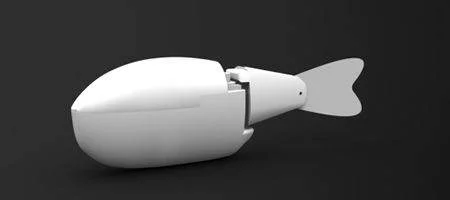It may not look particularly appealing to the likes of you or me, but the robot fish shown above is so cool that real ones will follow its lead.

Researchers from Polytechnic Institute of New York University designed their fish to mimic the tail propulsion of a real swimming fish, and tested it out with a variety of tail beat frequencies and flow speeds.
In nature, fish at the front of a school beat their tails more frequently, creating a wake in which their followers gather. The followers’ tails swish noticeably more slowly, leading researchers to believe that they’re getting a hydrodynamic advantage from the leaders’ hard work.
The team placed the robot in a water tunnel with a school of golden shiner school. While the robot remained still, it attracted little attention.
But when it simulated the familiar tail movement of a leader fish, though, the real fish fell into line, slowed their tails and started following their new leader.
“These experiments may open up new channels for us to explore the possibilities for robotic interactions with live animals — an area that is largely untapped,” says associate professor of mechanical engineering Maurizio Porfiri.
“By looking to nature to guide our design, and creating robots that tap into animals’ natural cues, we may be able to influence collective animal behavior to aid environmental conservation and disaster recovery efforts.”
The researchers suggest that robotic leaders could help in toxic situations such as oil or chemical spills. Like robotic pied pipers, they could lead fish and other wildlife that behave collectively — including birds — away from the danger.






